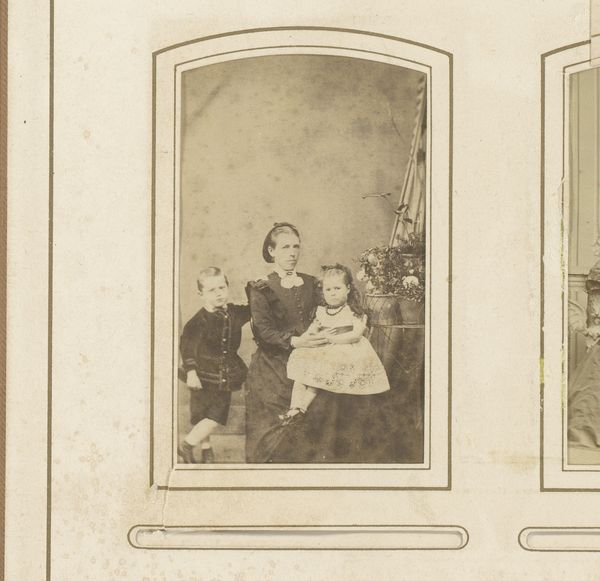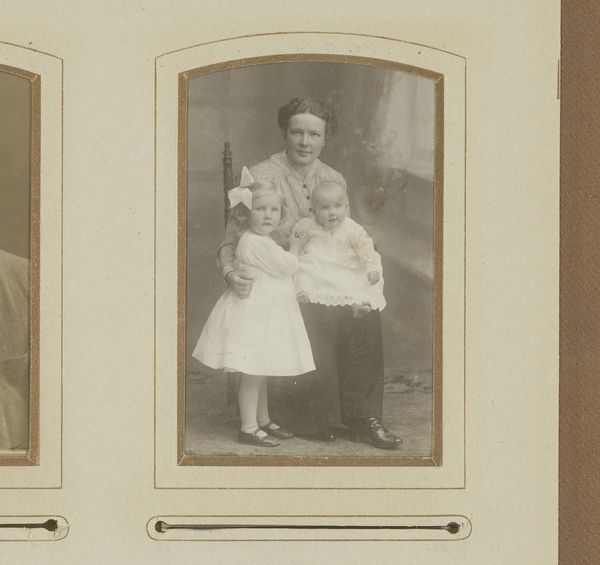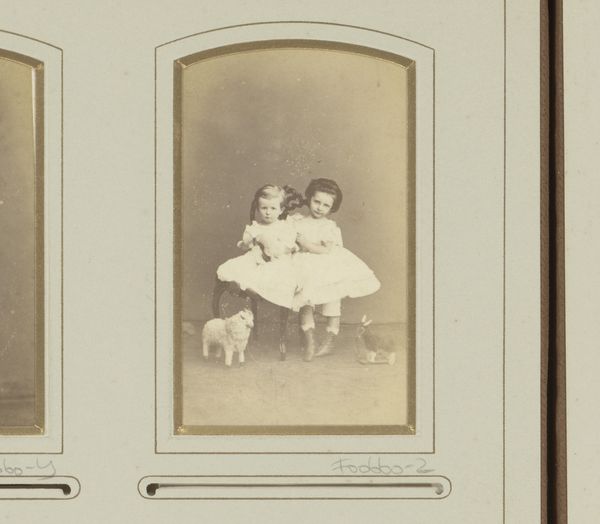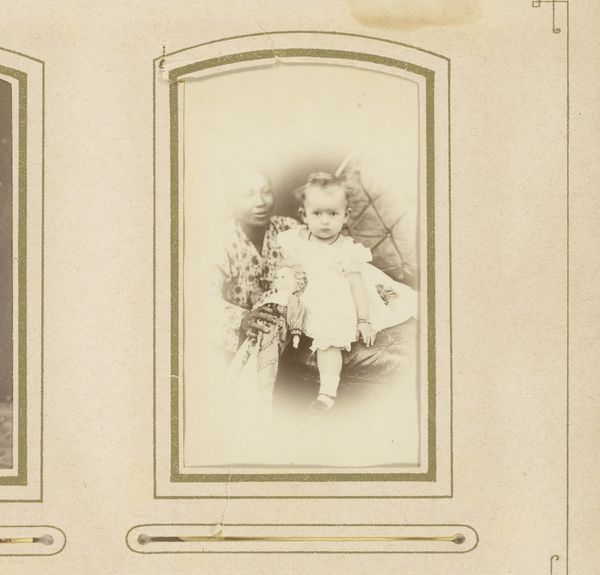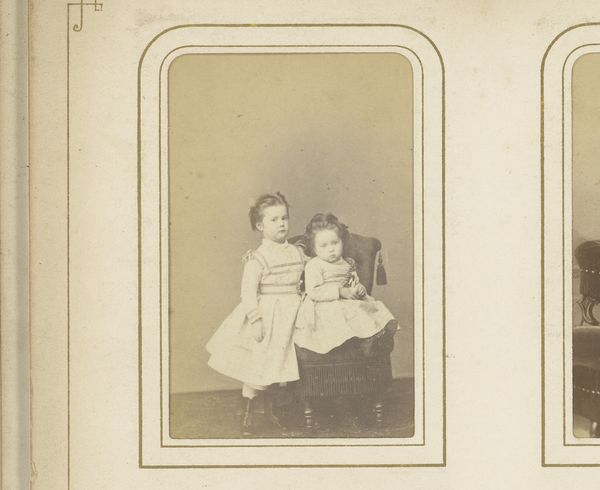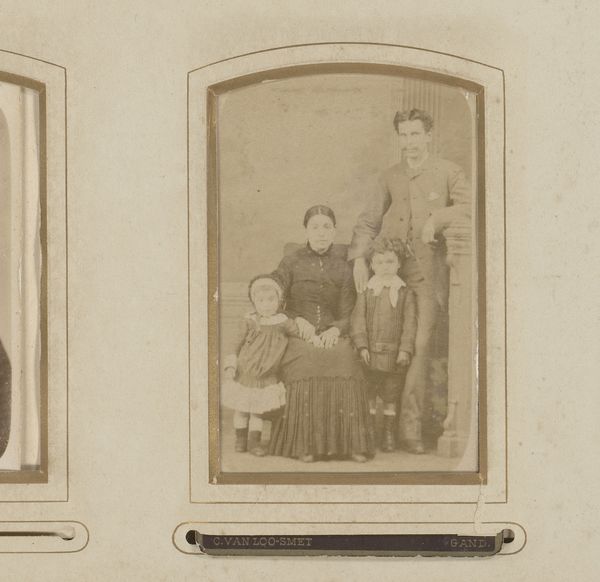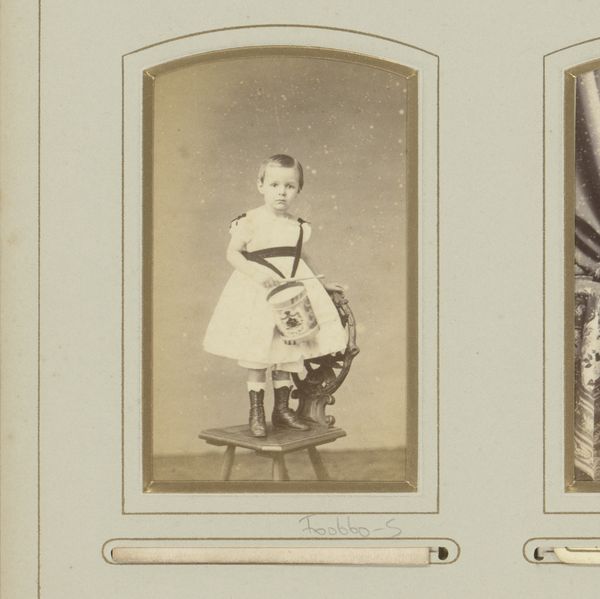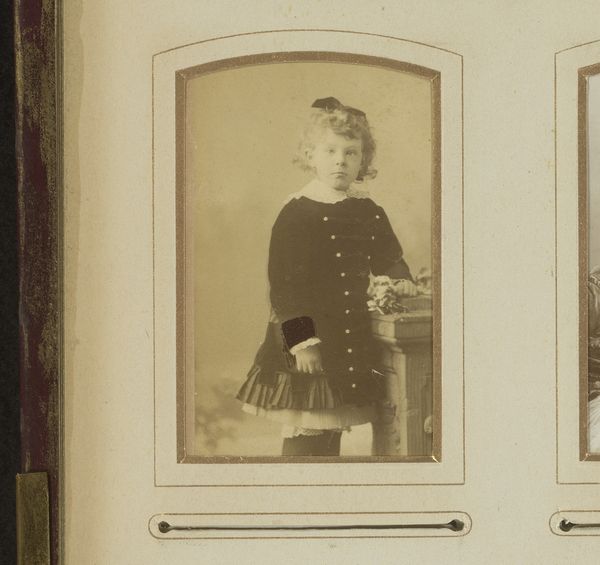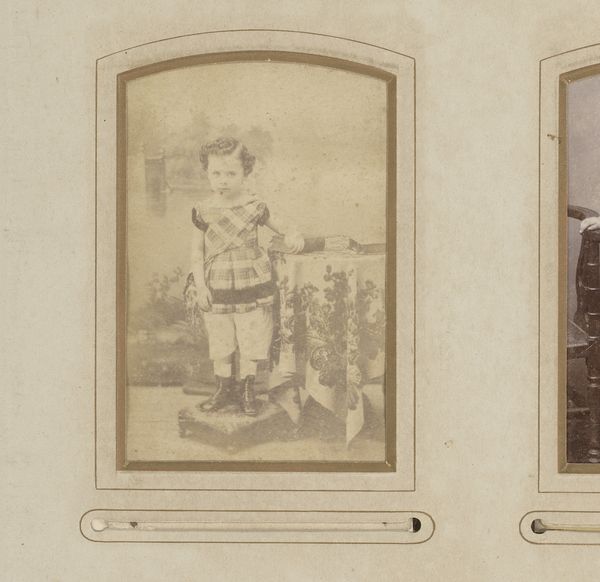
photography
#
portrait
#
aged paper
#
toned paper
#
vintage
#
parchment
#
photography
#
historical photography
#
old-timey
#
19th century
#
genre-painting
Dimensions: height 82 mm, width 53 mm
Copyright: Rijks Museum: Open Domain
Curator: This is a fascinating find. We're looking at "Portret van twee kinderen" – Portrait of two children – by J.B. Jasper, likely created between 1870 and 1899. It's a photograph. Editor: My immediate impression is one of faded elegance and, perhaps, a slight unease. The children's serious expressions coupled with the antique setting—the ornate chair, the paper's yellowed tone—creates a captivating sense of distance. Curator: Exactly. The process of early photography was painstaking, which contributes to the formal nature of the composition. These wouldn’t have been casual snapshots. The use of toned paper suggests a deliberate artistic choice, influencing the mood. Editor: It makes me think about the studio environment. Was it accessible to everyone, or mainly for the upper class, as a way to preserve an idealized image for the family records? The clothes give an idea of economic position, clearly they had money, judging from the fabrics. Curator: Good point. Photography was becoming increasingly popular, but remained a luxury. Portraits like these functioned as status symbols but also contributed to a visual archive, documenting individuals and families for posterity. Think about how that differs from, say, Dutch Masters who immortalized people, only of the wealthier class, and often painted posthumously. This is more real. Editor: I agree. The image feels posed and stiff compared to candid snapshots we have now, but that restriction seems fitting. They show status, memory and aspirations during that period. Curator: Let’s consider the social aspect, too. The construction of childhood changed during the 19th century; childhood was defined in bourgeois terms, they no longer entered work straight after they turned eight years old. Photography certainly had a role in defining these changes. The careful dressing of these two children tells us something of childhood, performance and also commodity. Editor: Seeing this now, detached from the original social context, adds layers of significance. The historical setting frames not just the individuals, but also the technological moment itself. It prompts reflection on the impact images have to society. Curator: Indeed. From a materialist viewpoint, it raises questions about accessibility, labor behind image production, and cultural values reflected through visual media. Editor: Considering all this allows us to appreciate how artworks such as this both capture and shape societal dynamics and political undertones of past eras, offering endless interpretive angles for contemporary audiences.
Comments
No comments
Be the first to comment and join the conversation on the ultimate creative platform.

